Charles seems to have aimed at a degree of uniformity, at least among the troops of the Ordinance. The men-at-arms were ordered to wear blue and white plumes (the Ducal colours) and were supplied with red crosses of Burgundy, made of velvet, to attach to their armour. The Coustilliers and archers were given surcoats half white and half blue, again with the red cross, and there is evidence from the end of the reign
Left An organ-gun from Charles the Bold’s army, based on a Swiss drawing. Single-barrelled guns are also shown on similar carriages. Right A light gun on simpie tres-tie carriage with provision for elevating, also from a Swiss drawing.
That infantry of the Ordinance also wore blue and white Ducal uniform.
The red cross of Burgundy, strictly two ‘ragged staffs’ crossed, but also appearing as crossed arrows or a red ‘X’, would probably be worn by other troops as a field sign, and appeared on most of the flags. On the latter, the other universal emblem was a stylised flint-and-steel, usually emitting sparks.
The Duke evidently also wished to standardise flags; the companies of men-at-arms had cornets of the type shown; each company ensign had its own saint and colour, and the squadron cornets followed the same pattern, but with one gold ‘C’ for the first squadron, two for the second, and so on. Unit numbers also appear on some flags.
A favoured symbol was St George and the dragon; shown on a guard cornet, it also appeared early in the reign on Charles’ chief standard, which was then white, and also carried the cross of Burgundy, plus flames etc, and Charles’ motto ‘Je I’ay emprins’ (I have undertaken it). Heraldic banners of individual vassals, or carrying the arms of Charles’ territories, were also common, and examples are shown.
One of Charles the Bold’s guns. This shows the ‘Burgundian’ carriage. Gun is about 75 mm calibre, overall length 360 cm, overall width 158 cm, wheel diameter 112 cm. Far wheei omitted for ciarity.

Burgundian horse armour (Bard) of the 16th Century (Tower of London).
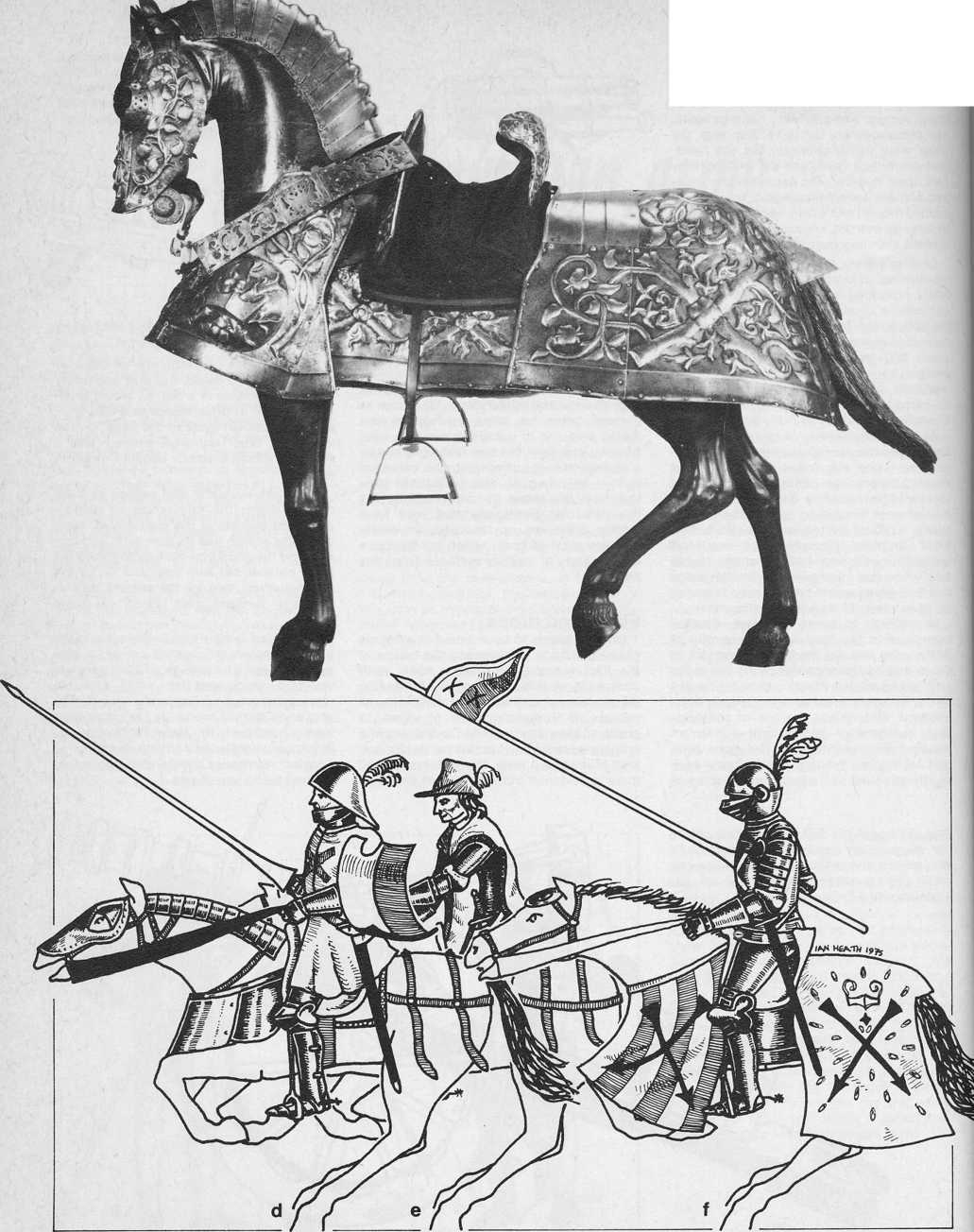
Burgundian flags, a Chief banner. Top left and bottom right, New Burgundy — blue, gold fleurs de lys, red and white border. Top right, Old Burgundy — blue and gold stripes with red border; Brabant — gold lion with red tongue and claws, on black. Bottom left. Old Burgundy as above; Limburg — red lion, gold claws and crown, on white. Centre shield. Duchy of Flanders — black lion with red tongue and claws, on gold. Fringe probably blue and white, b Cornet or pennon with arms of Burgundy, c Another version. Border and cross probably red. d Flanders lion. Gold, with red claws and tongue. Flag dun-brown, fringe red, blue, yellow and green. Possibly a Flemish pike-man's flag(?). e Pennon in blue and white, all flames and devices, including company number III, are gold, f Possibly a lance pennon. Red with white cross, g A cornet with the image of Saint Jude, motto ‘Je Lay Emprins' and crossed staves and arrows of Burgundy, entwined with flint-and-steel symbol. This basic pattern seems to have been used by the companies of Gendarmes d'Ordonnance, but with different colour and saint for each company. Here St Jude wears red, holds a white prayer in his right hand, and sits on a brown chair, all on a white base bordered red. His name is in black. The ground of the next part Is white, all markings in red. Both ends of the flag are red over blue, the 'device on the right gold, as is the border of the flag, h Probably an infantry flag. Captured at Grandson. Red, with white cross. Flames, flint-and-steels probably gold, i Banner of Jacques de Luxembourg (83 cm by 100.8 cm). Note odd angle of flag relative to staff. Lion red, crown etc gold, on white. 16-pointed star silver on red. There would have been a number of nobles' flags like this one. j A flag of Savoy troops In Charles the Bold's army. Red with white cross. Fringe green except at ends of cross, where it is red. k Burgundian banner of St George, probably a Guard standard. Top half of flag is white, bottom blue. St George has black armour, natural face, white sur-coat with red cross and gold centre, a gold helm wrapped with a red and white 'turban', gold cloak and sword. Horse is white with red harness and gold trim. Ground on which horse stands, dragon and inscription fJe Lai Emprins'), and flag edge all gold.
Left d Man-at-arms in sallet and carrying the concave shield with notch for lance still sometimes borne at this time, according to contemporary illustrations. He wears a sur-coat with the cross of Burgundy. His horse has regulation frontal armour, e A mounted trumpeter in armour but with hat and tabard-type garment, f Man-at-arms wearing armet with visor and biue and white plumes. His horse has plate armour under the cloth bard, but has no head or neck armour except a small round plate on the forehead. Colours of bard unknown. Pennon (which is genuine, but does not necessarily go with this bard) is blue over red with crosses in reversed colours. Red cloth cross on breastplate.
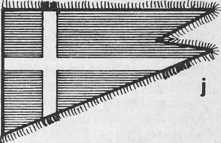
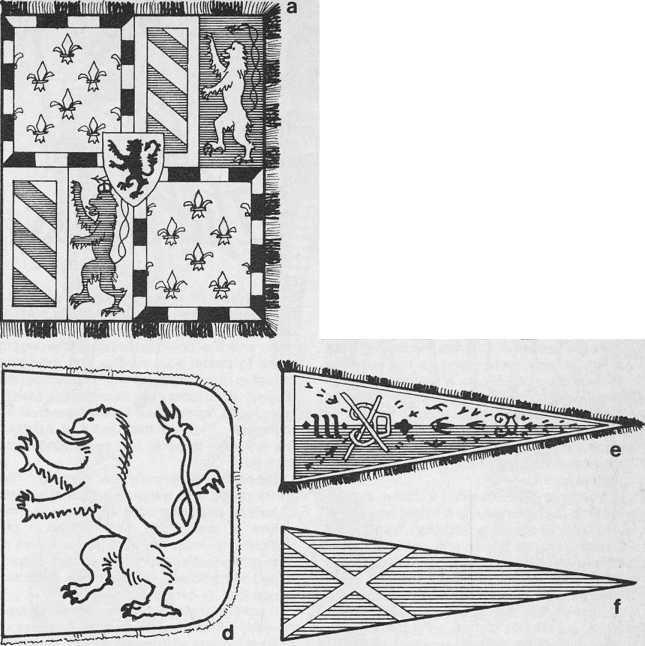
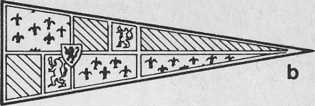
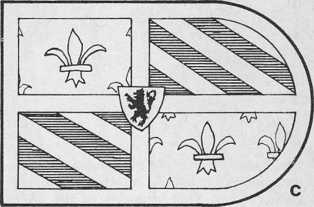
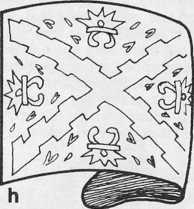




 World History
World History









